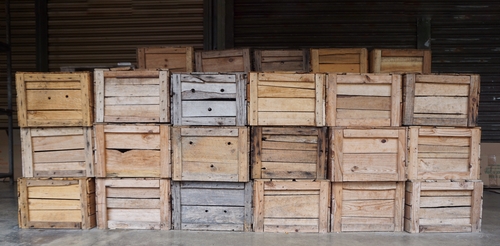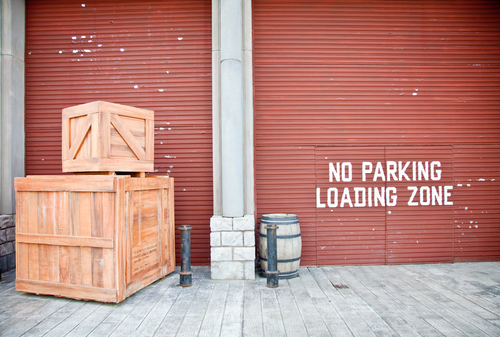Wooden crates play a huge role in today’s shipping industry and they’ve been in use for ages. The time between the Paleolithic Era and the Middle Ages saw wooden boxes being used for a variety of purposes, and wood itself for even more.

What Makes a Crate?
In order to understand the history of the wooden crate, you need a clear understanding of what exactly a crate is. While a crate can be made out of almost anything, it’s typically made out of wood. It fully encloses its contents but can be opened from the top or from one side. There are slight differences between a wooden box and a wooden crate, and wooden crates also come in a myriad of different designs. Some are open, some are closed and some are framed.
Wood: Paleolithic Era to Middle Ages
Wood is a natural material that has been harnessed and manipulated since at least the Paleolithic Era, which was more than two and a half million years ago. Even in the early days, people were cognizant of the types of wood they chose. They used wood for all sorts of things, including early forms of shipping, which is one of many industries that still employs the material today.
- Choosing Wood—Even in ancient times, people recognized that different types of wood had different qualities, each with their own pros and cons. During the Paleolithic Era, people were concerned with the quality of the wood, how available it was and how easy it was to work with. Many of the techniques we use to choose wood today were forged during this time period.
- Uses for Wood—Between the Paleolithic Era and the Middle Ages, wood was one of the most popular materials across all industries. Wood was used to build furniture, machines and carts, and it was even used to make the wheels that allowed the carts to move. People also made decorative chests and boxes out of wood during these times.
- Wood in Shipping—In addition to decorative boxes, wood was used to make shipping boxes. In fact, wood was a major aspect of the shipping industry from the beginning. Wooden ships transported cargo in wooden boxes, and wooden carts used wooden wheels to ship inventory more locally. Wooden boxes did an adequate job of containing cargo while it was shipped–whether by land or sea–and they still play the same role in today’s society.
Advantages of Wooden Crates
- Durability—Wood became a top material for construction and shipping because of its availability, but it remained popular because of its durability. Wooden crates last a long time if you take care of them the right way, which means businesses don’t have to spend the money to replace them on a regular basis. Investing in products that will last makes your business more efficient, and this has been proven throughout history.
- Environmental Responsibility—Using long-lasting materials that come from the earth is environmentally responsible, so it lessens the carbon footprint your business leaves behind. Environmental responsibility is one reason wooden crates are still so popular.
- Ease of Storage—Thanks to their durability and longevity, wooden crates can be stacked on top of each other without any problems. This makes storing them on pallets simple and it helps to keep the warehouse organized. Even in the old days, strong wooden boxes could be stacked and stored with ease.
Now that you know everything you need to know about the history of the wooden crate, make sure you take care of yours. Wooden crates continue to support the shipping industry and allow manufacturers and distributors to organize their inventory so they can meet their customers’ needs.

